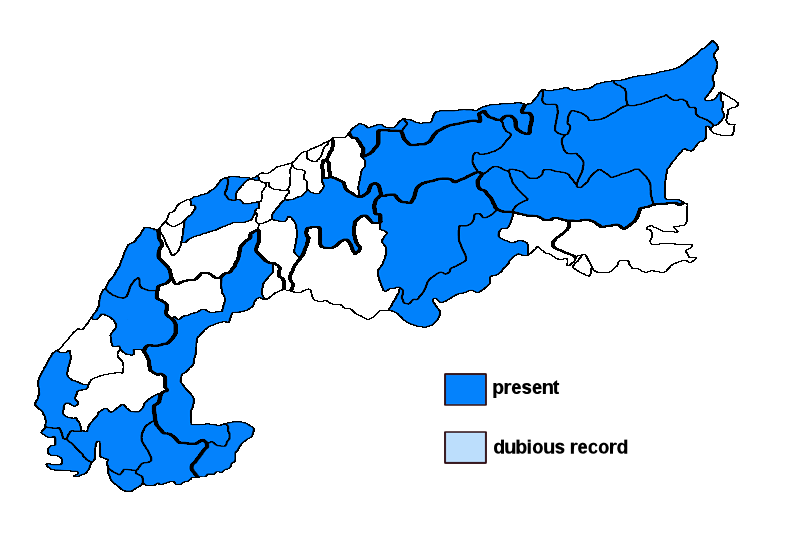Dirina massiliensis Durieu & Mont.
Syn.: Biatora praerimata (Nyl.) Walt. Watson, Bilimbia stenhammari (Fr. ex Stenh.) Boistel, Dirina cyclosora Poelt & Nimis, Dirina patronii Bagl., Dirina repanda auct. non Fr., Dirina stenhammari (Fr. ex Stenh.) Poelt & Follmann, Dirinopsis massiliensis De Not., Lecanactis opponens (Nyl.) H. Olivier, Lecanactis stenhammari (Fr. ex Stenh.) Arnold, Lecanora repanda Fr. ex Duby, Lecidea conspurcata (Sm.) Ach., Lecidea opponens Nyl., Lecidea stenhammari Fr. ex Stenh., Variolaria conspurcata (Sm.) Turner & Borrer
Lichenised.
Substrate: calciferous rocks, siliceous rocks, intermediate rocks (such as calciferous schists)
Altitudinal range: from the mesomediterranean belt (potential vegetation: evergreen broad-leaved forests dominated by Quercus ilex) to the montane belt (potential vegetation: deciduous forests dominated by Fagus sylvatica and closed coniferous forests with Picea abies)
Note: on steeply inclined or underhanging surfaces of basic siliceous or calcareous rocks, very variable according to the type of substrata (thallus colour depends on the quantity of calcium oxalates, and on the density of epilichenic cyanobacteria); in the study area the sexual form is restricted to coastal situations at the base of the SW Alps, while the sterile form is more widespread.
Austria: Tirol; Salzburg; Kärnten; Steiermark; Oberösterreich; Niederösterreich (incl. Wien); Germany: Oberbayern; Schwaben; Switzerland: Bern; Graubünden; Luzern; France: Alpes-de-Haute-Provence; Alpes-Maritimes; Drôme; Savoie; Haute-Savoie; Vaucluse; Var; Italy: Veneto; Trentino Alto Adige; Piemonte; Liguria;





